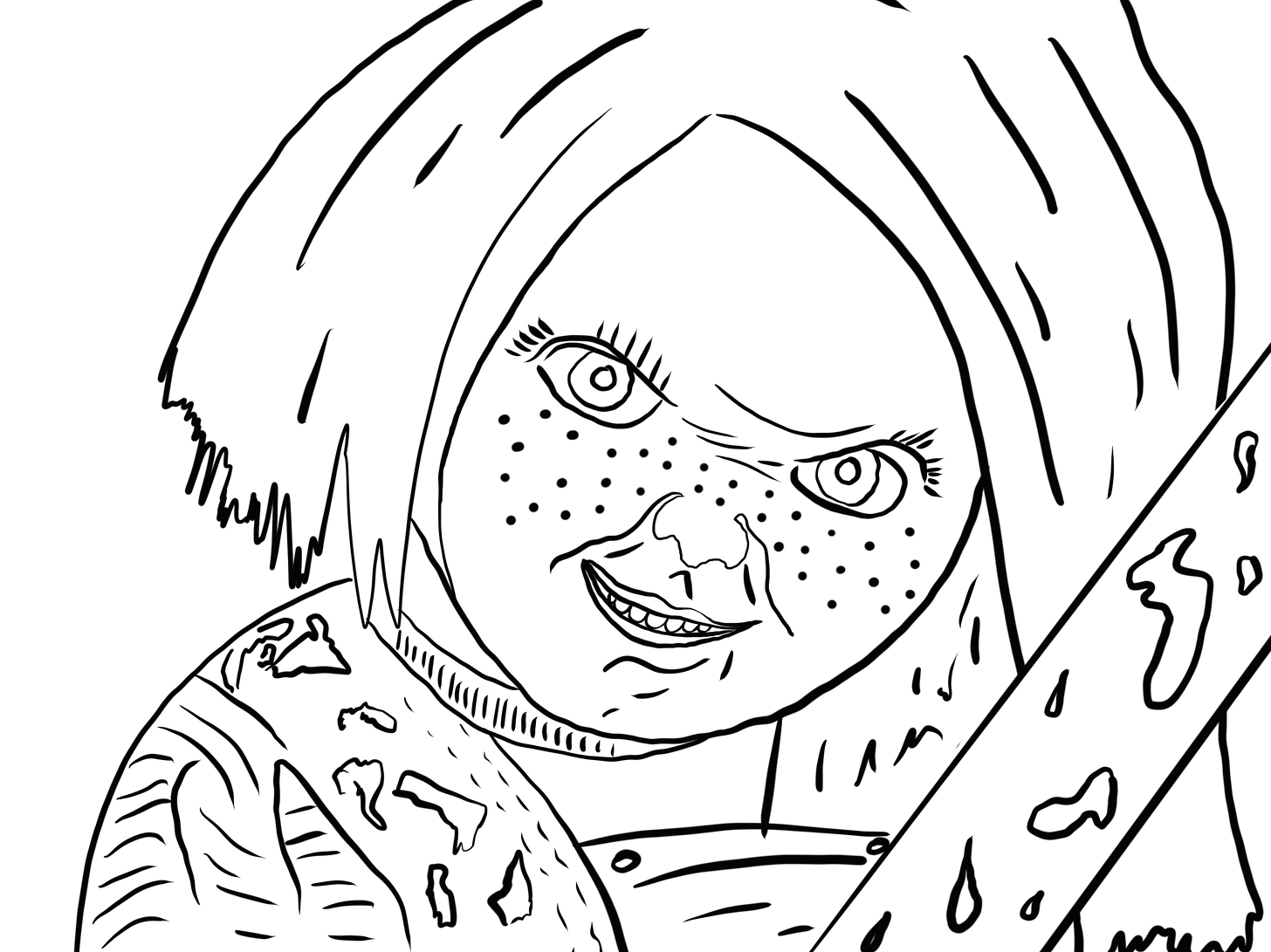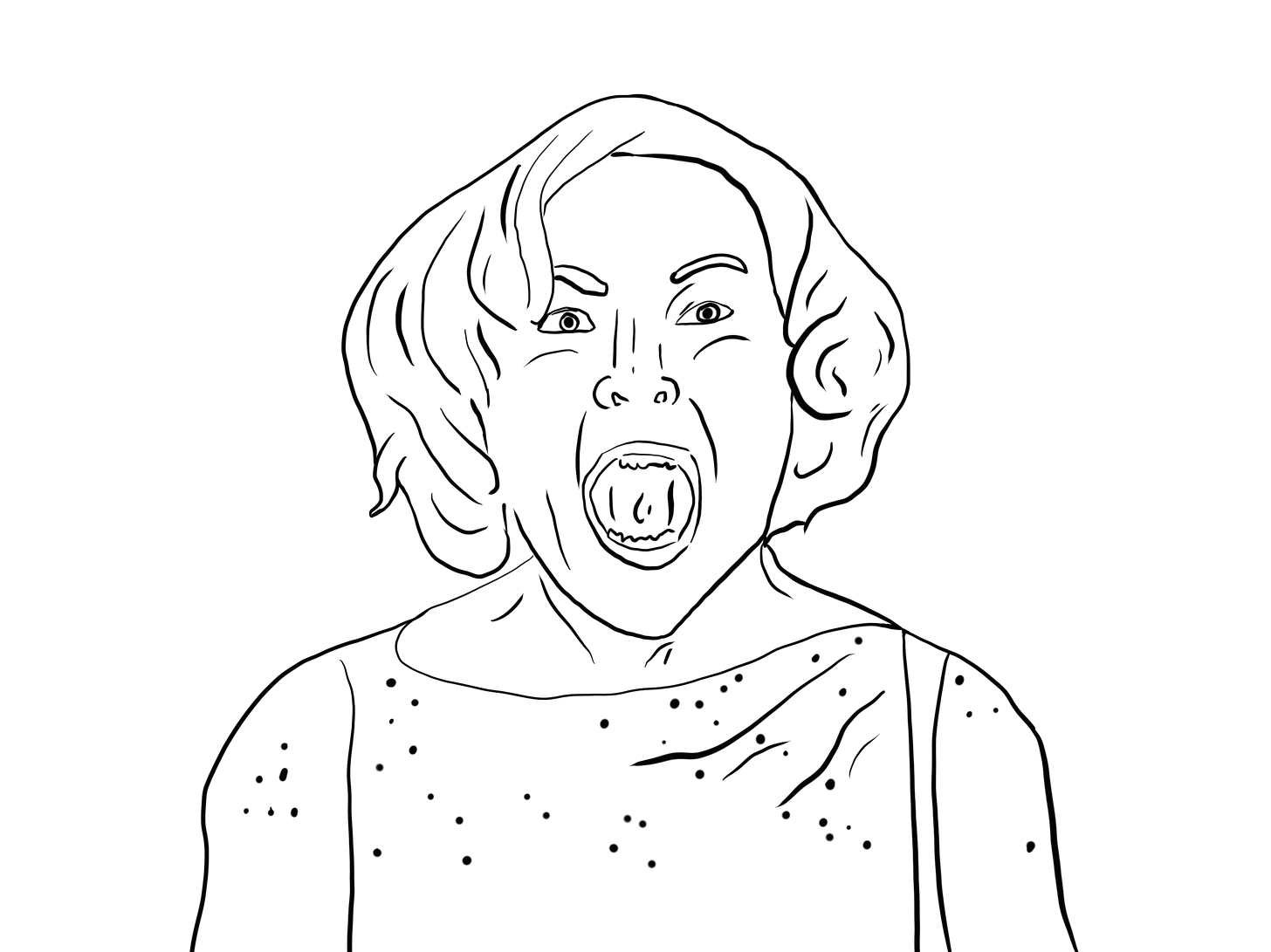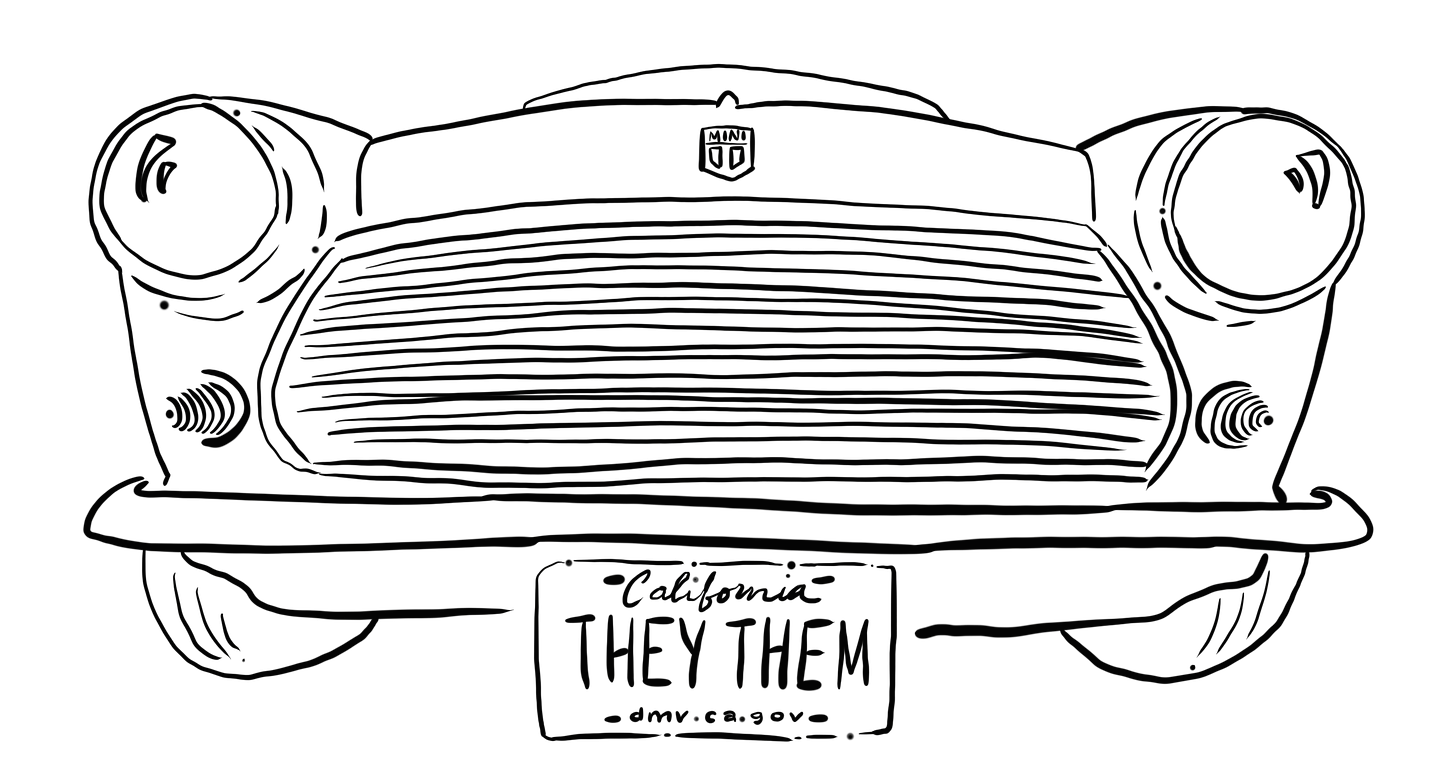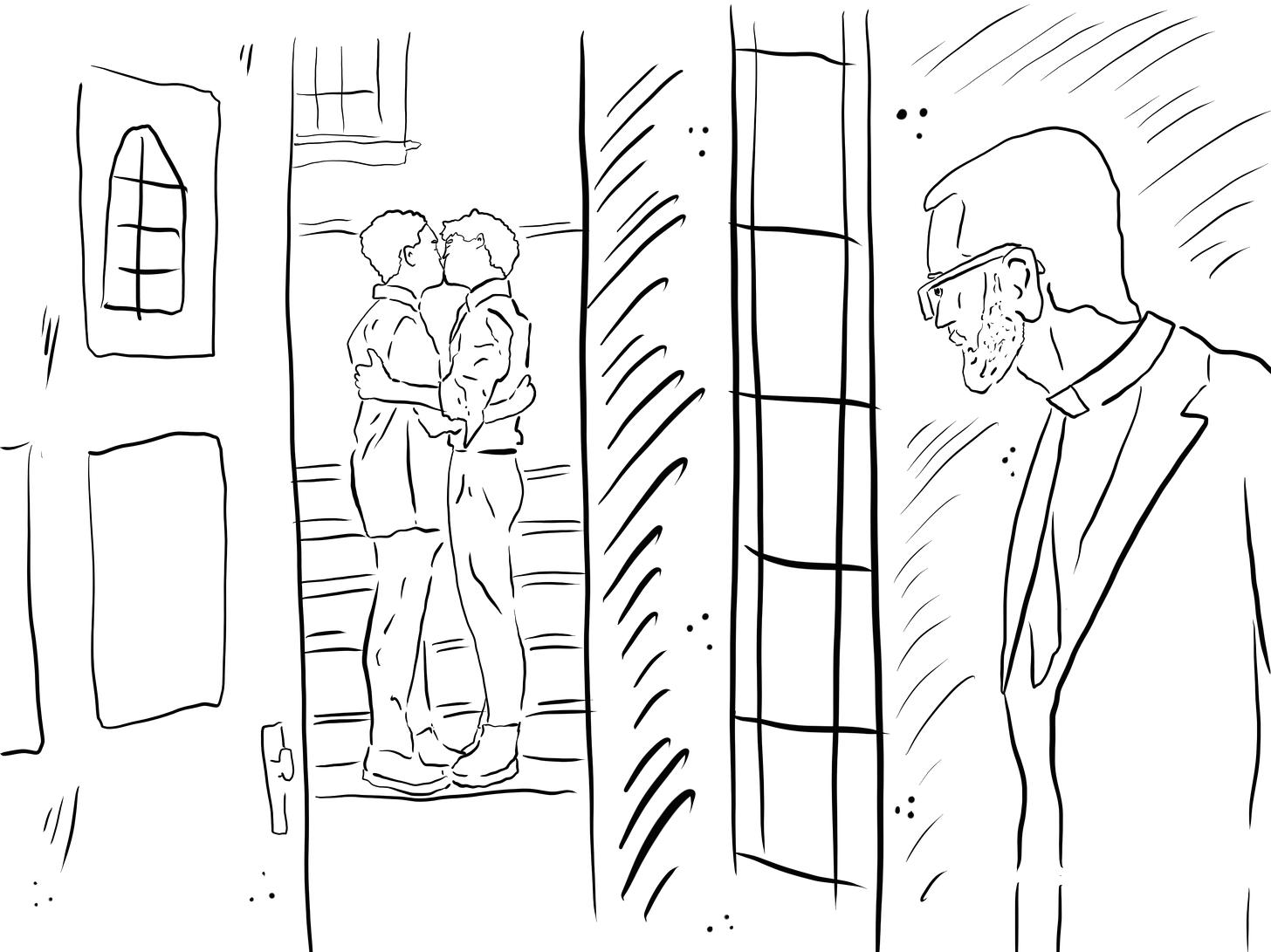The Yearning Rating: ✰✰✰
Romance ✰✰½
Sex ✰✰
Storytelling ✰✰½
Performance ✰✰✰
Yearning ✰✰✰
This review includes some spoilers for the TV adaptation Chucky. You can watch the first season of Chucky on Peacock, and the currently airing second season on USA or Syfy.
Written by Meg Heim
I want to discuss the cultural implications of dolls. Dolls have made a huge resurgence in pop culture as of late. American Girl Dolls are wildly popular again (RIP to my well-loved Molly doll, for whom I owned the entire bedroom set before generously donating it to my grandparent’s basement playroom). Our socials are brimming with AGD memes and content—influencers dining at the American Girl Doll Cafe, Kit Halloween costumes, and even collaborations between American Girl Doll and popular consumer brands like Stoney Clover and Swarovski. Femmes are wondering if they have American Girl Doll teeth.
Lots of this can be attributed to nostalgia. The isolation of the pandemic and its irrevocable impact on society and modern life left many of us seeking familiar comfort and community over those shared experiences of childhood. Nostalgia has also become somewhat of a brand and we can see that clearly just about everywhere: current fashion, home decor, film photography, etc. If you played with dolls as a child, chances are you found them fun and comforting. So what might we do with them in the context of horror storytelling? We’d subvert that—with a murderous redheaded doll in overalls and surprising upper body strength.
It’s November 3rd, Starbucks has already rolled out their holiday cups, but here at The Yearning, we love horror and therefore feel obligated to bring you one more spooky season offering before all the turkey trots and hall deckings get underway. Chucky is Don Mancini’s modern TV adaptation of the 34 year old Chucky franchise (which debuted in 1988 with the original film, Child’s Play).
Syfy’s Chucky builds off the basic storyline of the franchise—fictional serial killer Charles “Chucky” Lee Ray escaped death by performing a “voodoo ritual”, transferred his soul into a Good Guy doll, and continued doing his murderous work—and sets it in the wealthy, present-day neighborhood of Hackensack, New Jersey. Jake (Zackary Arthur), a queer, artistic eighth-grader finds Chucky at a yard sale and brings him home.
The first few episodes introduce the remainder of the unlikely band of crusaders— Lexy, the scarily mature and popular (mean) white girl, and Devon, the quiet, thoughtful Black kid who becomes Jake’s eventual love interest. The first season unites them all as survivors of Chucky’s targeted attacks and therefore among the few aware of the doll’s evil consciousness. Chucky is consistent with his chaos player perspective and describes the world to Jake as, “the Superbowl of Slaughter”. Chucky systematically attempts to align himself with three of our main characters by playing up the traumas of middle school and family dynamics enough that these 13-year-olds actively consider murder.
What unfolds here is…there’s no other way to say this…pure camp. If you’re looking for a queer, slasher, dark comedy soap opera, then Chucky is for you. The first season is a little bit like Euphoria for middle schoolers with more stabbing. It’s completely ridiculous, but in such a fun way. Lexy complains more than once that she shouldn’t have gotten so high before class. Devon’s reassuring, placid smiles and the comforting remarks he shares with Jake after the loss of his father (at the hands of Chucky) have Big Therapist Energy. And—in a highlight of the pilot—Jake screams at his dad: “You only care that everyone knows I’m a FAG!” If you’ve never seen a Chucky movie before, Chucky’s gravelly, mobster-esque voice contrasts with the saccharine, pre-recorded childlike voice of the Good Guys doll, but they share one phrase: “I’m your Friend to the End!” Yes—when Chucky says it, it is awful.
What I find so fun about this series is that it combines such a young cast—middle schoolers, in the midst of puberty and popularity—with such an angry and ridiculous villain. The episode recaps frequently kick off with, “Last week, on f***king Chucky…” just to get you into the perfect, unsettled headspace. The writing is actually not bad; I mean, it’s not critically impactful work, but there’s something comforting about the almost Disney Channel vibes of the script. It has a straightforward overarching plot— Lexy, Jake, and Devon come together over and over again to attempt to defeat the persistent killer doll—but with super dark subject matter. The absurdity just adds so much to the irreverent fun of it.
Chucky is an unswerving continuation of the original franchise. With six sequels to the original, a remake, comic books, a video game, and now a television series, it would come as no surprise if this adaptation was a complete departure from the original story. TV remakes often are! But I think there's often a lot of disappointment or dissatisfaction when that happens—so I really commend the Chucky series for committing to the ongoing narrative. With that much material already in the Chucky universe, the writers had quite a job in store to tie everything in and set up the story in a way that still allows newcomers to the series to enjoy it. And I think for the most part, they succeeded in this. I feel like this is largely possible because Mancinci, a queer writer and director, has almost exclusively stayed at the helm of it (although, he did not direct the 2019 remake of the original Child’s Play). As you continue to watch the series, Mancini’s intention to build on the groundwork laid in the previous films is increasingly clear.
Both the actual episodes and the pre-episode recaps often include clips from the original seven movies to provide additional context and remind viewers of the increasingly ridiculous rules—i.e., the frequent soul transfers from dolls to human bodies…and sometimes back to dolls. And sometimes one human soul split between a human body and a doll. (And sometimes, one nonbinary doll soul split into two conveniently newborn twin human babies. But more on that later.) These clips are a little confusing at first—I caught myself pausing more than once to then realize that the clip I just saw was never actually in the previous episode—but mostly they help to bring you up to speed.
Mancini was also able to bring back many crucial actors from the films. As a filmmaker, a creative choice like this will always feel very special to me. It signals a mutual respect and appreciation for the environment on set and the community formed during the making of the project. Among those returning are Jennifer Tilly (Bound, Liar Liar…but really, BOUND), playing both herself and a demon doll possessing the body of Jennifer Tilly, and Fiona Dourif as the unlucky Nica Pierce, a paraplegic woman who was the target of Chucky’s malevolence in Curse of Chucky (2013). Brad Dourif, who voiced Chucky in the original films, also rejoined the cast and lends a nostalgic, familiar cadence to ground the series in the world of Chucky.
It’s also worth mentioning that Chucky aligns itself with its predecessors in that the doll is almost 100% puppeteered. In an interview with SyFiWire prior to starting production, Mancini shared: “I think it’s so important to keep Chucky as a practical puppet effect, partly because it’s important for the actors to have something to respond to on set…I also think it’s important that Chucky have the feel of a doll. He should be a little bit herky-jerky.” In modern film and television production, making the choice to go with any and all practicals is complicated—they cost more money and take more time to execute effectively, therefore costing even more money. It speaks to Mancini’s diligence as a producer and creator that this was maintained. As for the *impractical* effects, Chucky’s facial animation feels realistically plasticky; it isn’t overly distracting the way heavy CGI can be these days. He fits well within the family of Chucky dolls that preceded him.
I originally chose to cover Chucky because I took an interest in the nonbinary twins, Glen and Glenda, that are officially introduced to the series in Season 2. But I was pleasantly surprised to find queerness intentionally and thoroughly distributed through the entire series. For queer eighth grade boys, the show moves the romance along between Devon and Jake fairly quickly. But the show, in keeping with the increased campiness of it, manages to be pretty consistently tongue in cheek. On more than one occasion the two boys—who openly identify as boyfriends—are shoved into a closet to hide. Early on in Season 1, Chucky takes a break from trying to convince Jake to murder Lexy to casually tell him about his genderfluid kid. Thanks to Miss Tilly, we even get a few brief sex scenes between women and one obsessive and deliciously demented queer love triangle.
I feel like the world of Chucky is a good example of important queer stories being given time to adapt and push their boundaries. When you give queer creators the space to develop their storytelling, such as Mancini has been afforded with a franchise this long-running, there’s real room for representation. Remember when I called this a soap opera? Buckle in for Glen and Glenda’s “birth story”. In Seed of Chucky (2004), Glen, the benevolent living doll child of Chucky and his doll bride/accomplice Tiffany Valentine, confesses to their parents that they sometimes feel like both a girl and a boy. They ask if they can be both. For separate silly plot reasons, Tiffany artificially inseminates actress Jennifer Tilly (who she is holding hostage) with Chucky’s sperm. Tilly wakes up shortly after with a full pregnant belly. She delivers twins, whose birth sexes are identified by Tiffany as male and female. Tiffany realizes that Glen and Glenda, the “split personalities” of their child, can inhabit the two children. They are then souls split into two different human bodies.
While the way that Glen and Glenda came to be is undeniably absurd (and disturbing), it still represented a very important moment of trans and gender-diverse representation in early-aughts media. Seed of Chucky didn’t do well at the box office when it opened and the studio expressly forbade Mancini bringing back Glen and Glenda in the movies that followed (Curse of Chucky and Cult of Chucky). But when transitioning the franchise to television, Mancini shared in an interview with Them that Syfy and USA welcomed the return of the twins. It’s a testament to his storytelling that both they [and the movie that tells their origin story] have found a community of support in the twenty-plus years since it premiered.
Á la Lindsay Lohan in The Parent Trap movie magic, nonbinary actor Lachlan Wilson (Chilling Adventures of Sabrina) plays both Glen and Glenda in the Chucky television adaptation. They have the privilege of a debut episode that also houses a reunion of the Wachowski sisters’ 1996 sapphic thriller, Bound. Jennifer Tilly, their mother, hosts them for an 18th birthday celebration along with their Auntie Gina [Gershon], Joe Pantoliano, and for some reason Real Housewife Sutton Stracke. (As a reminder, Glen and Glenda’s mother is Actress Jennifer Tilly who is possessed by Chucky’s accomplice and former lover Tiffany Valentine. Silliness abound).
The whole show sometimes feels like an inside joke. It’s incredibly self aware— Mancini clearly understands that the more often you return to a horror franchise and up the antes, the less scary it actually becomes. He ran with that concept throughout the course of the franchise and straight into the television series. Allowing each film to slowly shift from straightforward slasher horror with elements of black humor to increasingly satirical, campy dark comedies kept audiences entertained and invested. It’s fun to feel clued in. By being both aware of and embracing the escalating camp, Chucky succeeds in evoking this.
Season Two imbues a very sexy, dark academia vibe when our Chucky-fighting squad suddenly find themselves all shipped off to a Catholic boarding school (because most of their parents are dead at the hands of Chucky). In yet another example of the inherent adaptability of the series, Chucky embeds religious trauma, a potent Series of Unfortunate Events vibe, and hot private school uniforms into its already convoluted fabric. Despite a new setting and new challenges, Chucky is like a cockroach—you can’t kill him. Even if you think you have, no matter how final that “final fight to the death” feels…you can rest assured that it's not actually over. He’ll find a way to come back. There’s so much comedy in this because he is, ultimately, 2 feet high and made mostly of plastic.
What really brings the soapy through-line out in this show is that there’s always a last minute justification. I mean—just look at the catalog. Mancini has a lot of footage to work with. A handful of last minute reveals will always leave the characters aghast and you laughing. This adaptation of Chucky feels nostalgic, even if you haven’t seen a single frame prior.
Catch up on Season 2 of Chucky on USA or Syfy. (Also, we’re looking forward to the next killer doll movie, M3GAN. )









I’m very glad that I made it past the terrifying (and amazing!) first illustration (despite the fact that I was scarred by watching the original Chucky movie at a very young age) because I really loved this review! Particularly this hilariously blasé line: “our Chucky-fighting squad suddenly find themselves all shipped off to a Catholic boarding school (because most of their parents are dead at the hands of Chucky).” Can’t wait for the next review!
Incredible review of a wacky show!! Good job, y’all!!